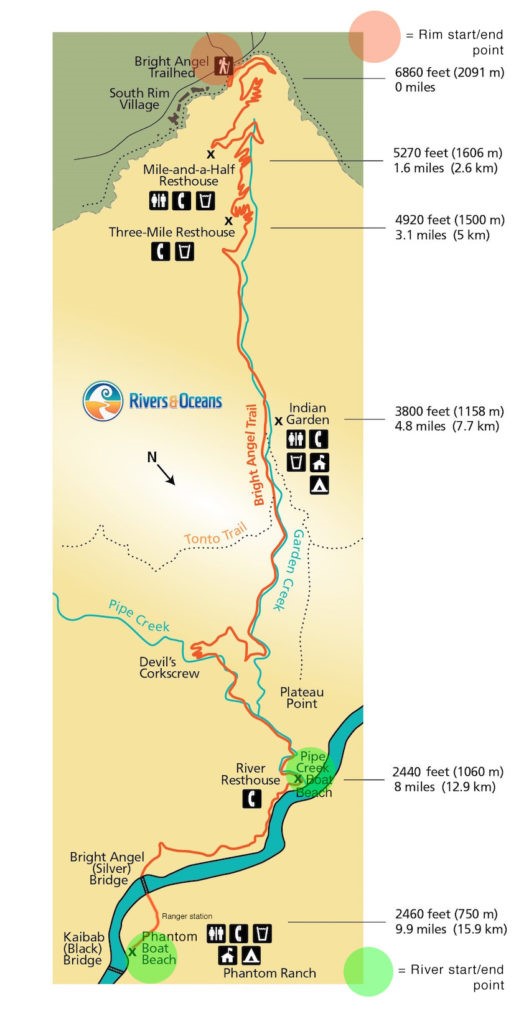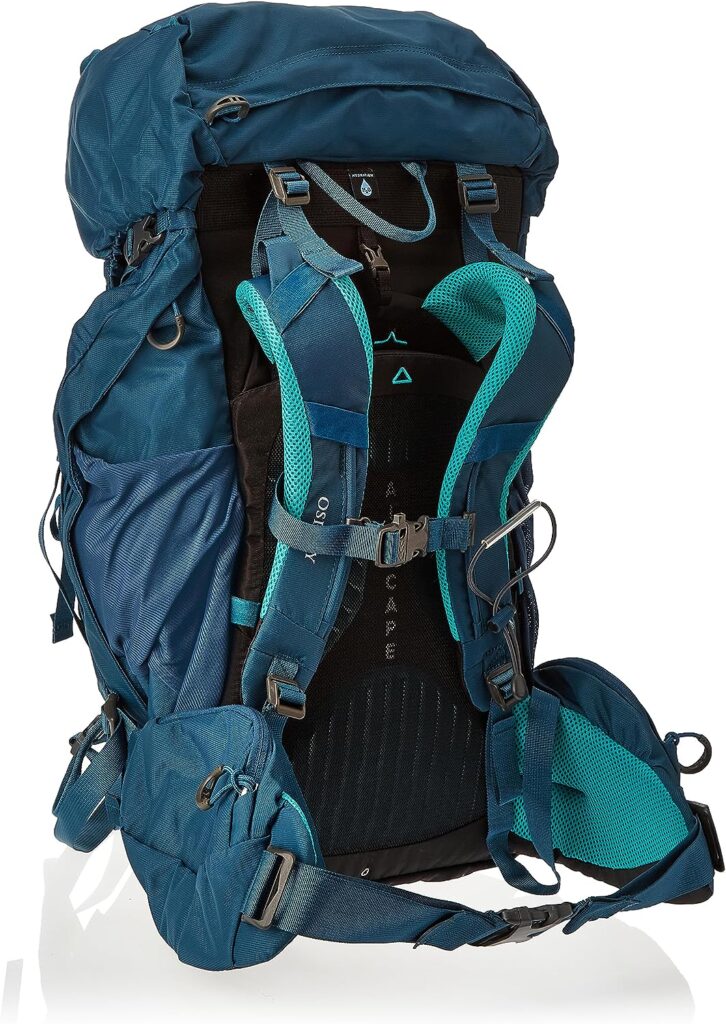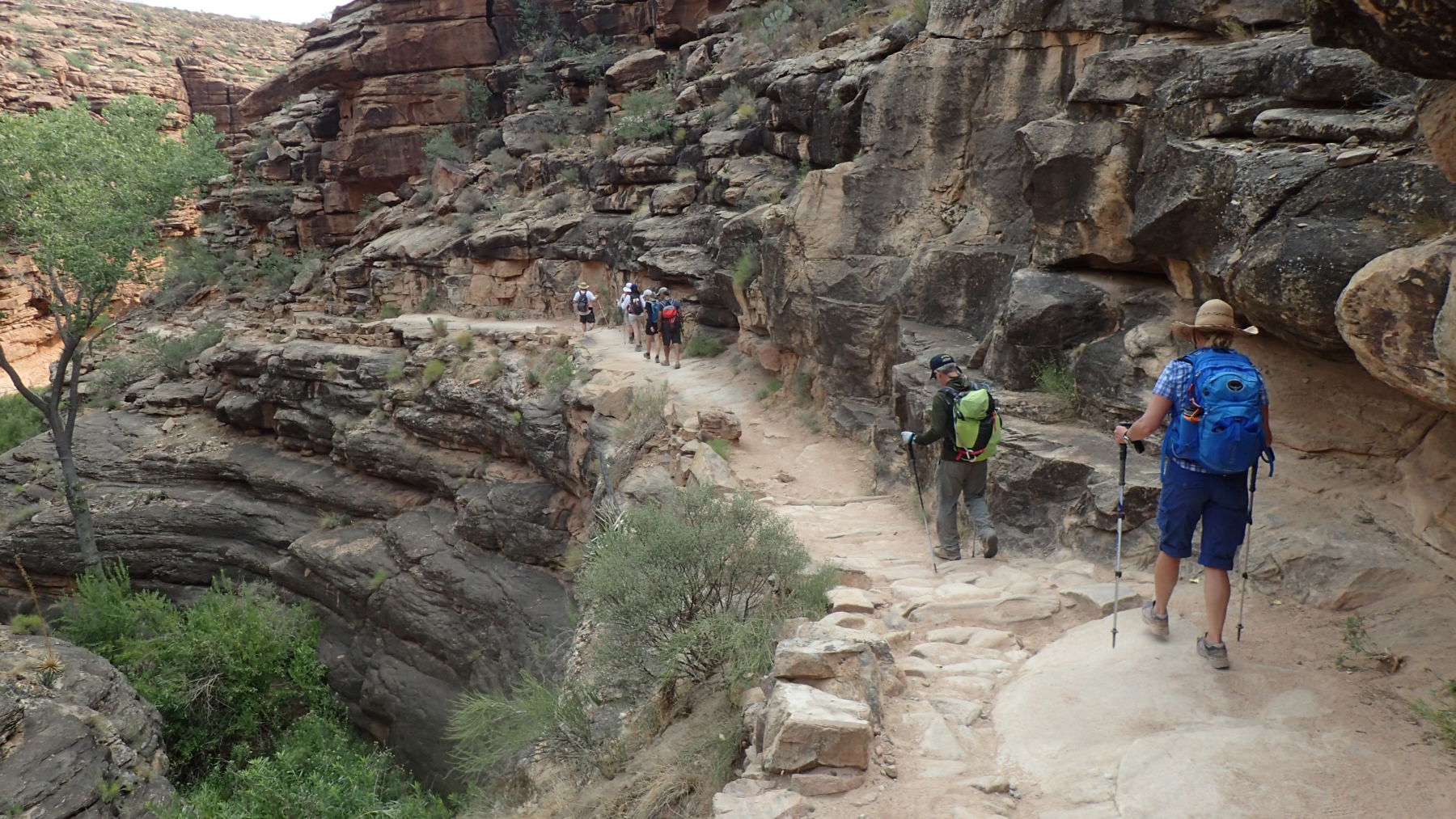
Hiking In and Out Of The Grand Canyon
If you are considering rafting either the Upper Section or the Lower Section of the Grand Canyon, you will be required to hike in or out of the Grand Canyon. The Upper Section requires a hike out, where as the Lower Section begins with a hike in.
Hiking in and out of the Grand Canyon is an adventure itself. It is an experience that many travelers seek out due to the scenery, challenge, and the feeling they get when conquering such a feat. Below are some of the questions we are most frequently asked about the hike. Before hiking in and out of the Grand Canyon, prepare yourself with these tips!
How long is the hike in and out of the Grand Canyon?
Don’t underestimate the hike. The Bright Angel Trail, which runs from the South Rim of the Grand Canyon to the Colorado River, is long. You will cover over 9 miles, with a 5,000-foot elevation change. The journey can take anywhere from 6-8 hours to complete. If you are hesitant about your ability, talk to one of our adventure specialists who can help you properly prepare for the hike.
What should I do before hiking in and out of the Grand Canyon?
Before hiking in or out of the Grand Canyon, you’ll want to train with a 20-30 pound pack while wearing the boots you plan on wearing for the hike. You want to make sure they are good and broken in to minimize the likelihood of blisters. We recommend training on hills or staircases. 15 flights at a time will help to improve your endurance.
What type of shoes should I wear?
If you keep your pack light a trail running shoe is far less likely to blister feet then most boots. People needing extra ankle support typically prefer a hiking boot. Either option doesn’t need to be expensive, you need something comfortable, stable, and supportive.
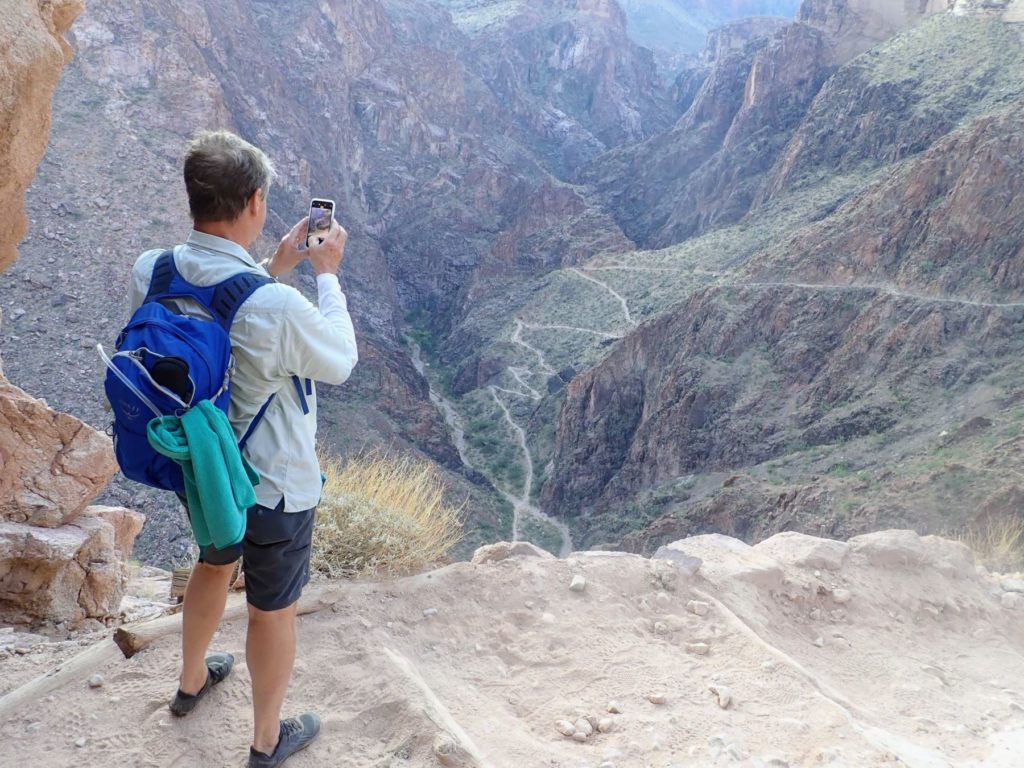
How big of a backpack should I use?
Ideally, you should be able to fit all of your gear in a 35L (liter) backpack but some people prefer a little larger pack. If you need a backpack bigger than 44L you probably should bring less gear. In addition make sure your backpack has a good waist strap. Here is an inexpensive backpack option. The Osprey backpack in the photo below is a nice higher-end option.
What to put in your backpack
Aside from water, snacks, sun protection, and clothing, we highly recommend electrolyte tablets and duct tape. The tablets will help to push you through and the duct tape can be used to prevent blisters. The moment you feel a hot spot on your foot, cover it with duct tape. Here is an easy way to bring a small amount of duct tape. Moleskin is also useful. Tending to your feet is very important when hiking. Don’t be surprised if the guides are asking about your feet while on the hike.
Is there other gear do you recommend?
We always recommend hiking poles. Bring them even if you think you don’t need them because your knees will get tired. Using hiking poles will alleviate the stress on your joints. They are easy to hike with and store on the raft.
Your backpack should be comfortable and ideally something you have worn before. We recommend a backpack with a waist belt as you will be carrying your personal items and gear for the trip. Your bag will weigh somewhere between 20-30 pounds.
Are there water sources?
Yes. There are two places to get water along the trail. One is about 1.5 miles down and another at Indian Gardens which is about 4 miles in. You will want to make sure to fill up your bottles at Indian Gardens.
You can combine carrying a Nalgene with Gatorade or water with electrolytes, then bring a 1-2 liter camelback filled with water. It is best to carry 2-3 liters of water with you when hiking in or out of the Grand Canyon. We strongly urge you to avoid plastic water bottles like Dasani or Fiji. Not only are they environmentally unfriendly, but also they are not nearly large enough.
The piping in the Grand Canyon is prone to breakage which happens occasionally. If this is the case you will have to prepare to pack more water.
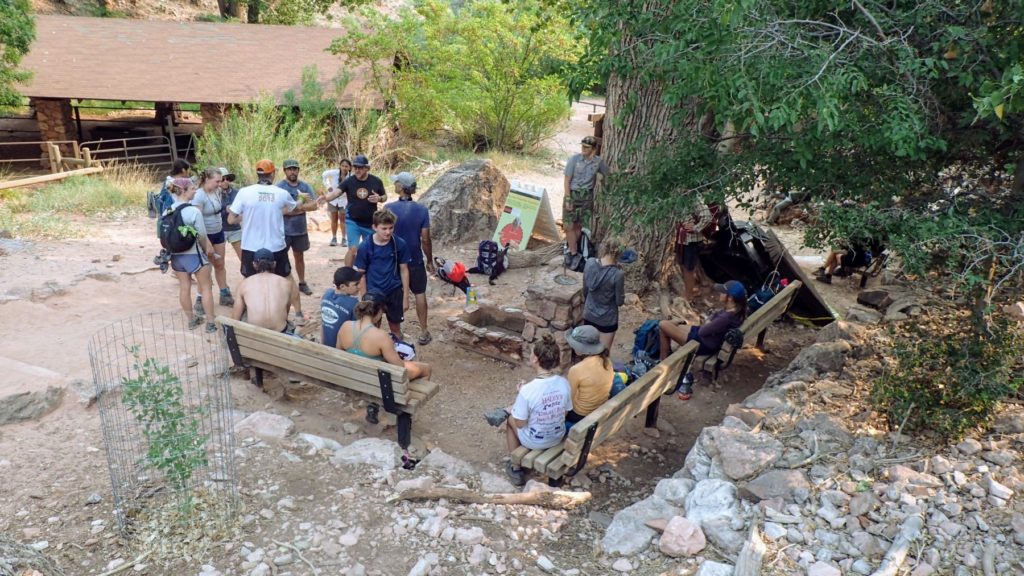
What can we expect to see on our trip?
You will be up close and personal with every layer of the Grand Canyon. As the rocks change, it will almost feel as if you are going back in time. The trail follows the Bright Angel fault line, which is a natural trail, made by the fault line. The vegetation and geological changes are amazing.
Since you are on the trail, wildlife is pretty scarce. You may come across some deer or bighorn sheep hanging out at Indian Gardens. You may hear the Canyon Wren, which have a beautiful call, although you may not see them.
Are there any trail rules I should know about?
* Etiquette on the trail is very important and makes for a better experience all around.
* Uphill hikers have the right of way. If you are going downhill just step aside.
* If you have a large group, spread out so that no more than 7 people are hiking together.
* Leave no trace, pack out what you pack in. If you see little pieces of trash, pick them up as you see it, and dispose of it in the waste bins once you get to the rafts.
* Be friendly and nice to fellow hikers.
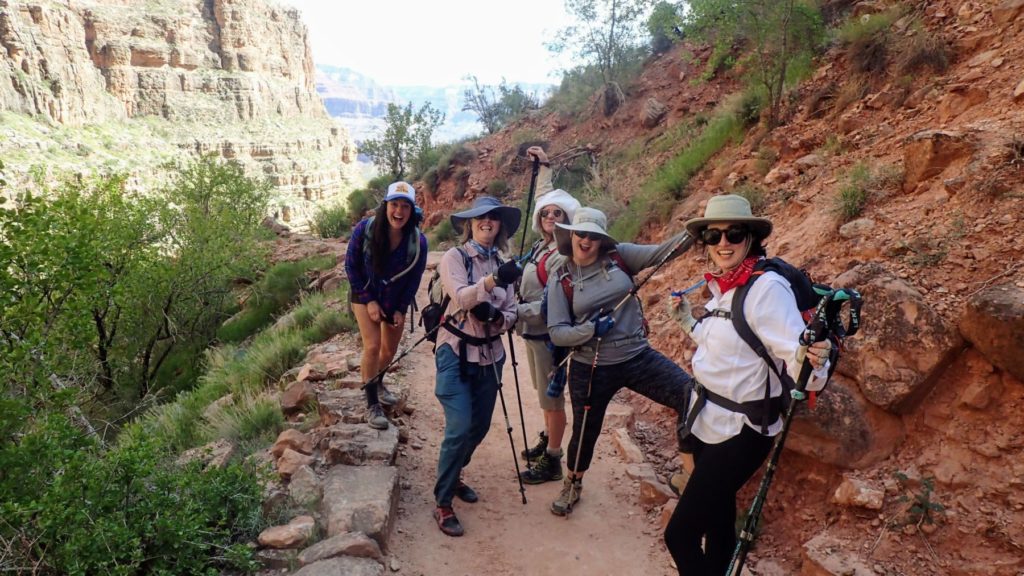
Concluding Thoughts
Hiking in and out of the Grand Canyon is an experience you won’t soon forget. Plan ahead, do some training and break in your gear. If you are properly prepared the hike will still be challenging but it can also be enjoyable. For more information check out our guide to hiking the Bright Angel Trail.
Reach out to us (928-526-4575) if you have questions about the hike, your capabilities or Grand Canyon rafting in general. We can give you reasonable expectations and help you prepare for your adventure! Here is more information about rain gear, and side canyon hiking from the river.

